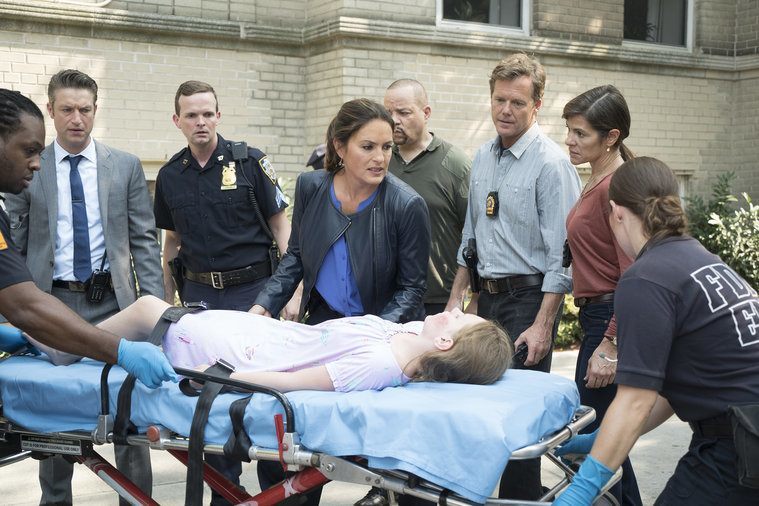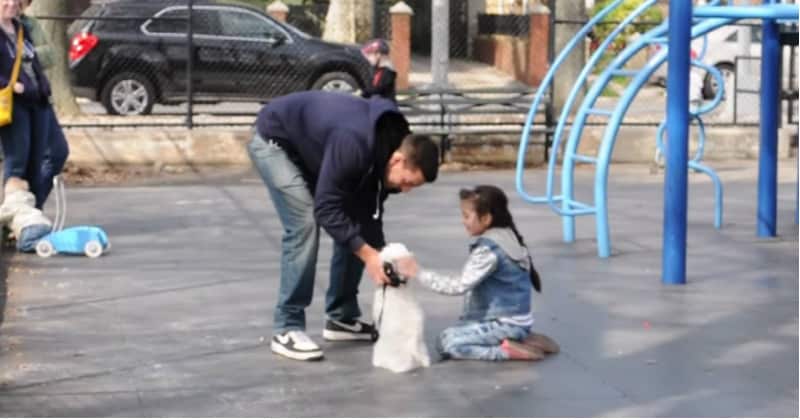When I grew up, they taught kids a program called “Stranger Danger.” The goal of stranger danger was to warn kids that bad people are lurking around every corner so you should never get into a car with strangers, take candy from someone you don’t know, or even speak to strangers on the street because they are probably out to kidnap and kill you.
Maybe that wasn’t the intended message, but that’s the message which I remember!
I’m happy to read that some groups are rethinking how stranger danger is taught, but the message is still essentially the same:
Don’t trust people.
Especially don’t trust people you don’t know.
And, due to biases in the media and what some researchers claim is our natural inclination to form groups, stranger doesn’t even mean someone you don’t know. A “stranger” is someone who is different than you.
Even if you missed the Stranger Danger program in your school, you still get the message every day. It comes in the form of the numerous serial killer and rape TV shows aired pretty much nightly. I admit that I love watching Law & Order and Criminal Minds, but damn it makes me feel paranoid after watching! And don’t get me started on the fear-mongering in the news.

I love my weekly dose of paranoia as much as the next person!
Most Crimes Are Committed By People We Know
The first reason that the Stranger Danger message is a load of crap is because most crimes are NOT committed by strangers. The majority of crimes are committed by people we know.
According to the Bureau of Justice Statistics, in 2011 strangers committed 38% of nonfatal violent crimes including rape, sexual assault, and robbery. Between 1993 to 2008, 21-27% of reported homicides were committed by strangers. The rest were by people known to the victim.
The FBI stats for 2011 show that 11.7% of homicides were committed by strangers.
When it comes to crimes on children, the stats are even lower. Only 10% of child victimizers in the USA are strangers. As for sexual offenders, the stats sink even lower. As a University of New Hampshire report states,
“Despite the stereotypes about stranger molesters and rapists, sex offenses are the crimes least likely to involve strangers as perpetrators.”
What about kidnappings? Despite sensationalized videos showing how vulnerable kids are to kidnapping and misleading stats saying that “700 kids are kidnapped every day,” the reality is much less menacing. The Department of Justice reports that 800,000 children are indeed reported as “missing” each year – but only 115 kidnappings are the result of a stranger snatching the child. Even in these terrible cases, 90% of them return home within 24 hours and the majority are teenage runaways.
So Why Aren’t We Teaching Kids “Friends and Family” Danger?
Like that would ever happen! Instead, we teach kids to
Be polite
Give Great Uncle Mort a kiss, even though he smells bad and makes you uncomfortable.
Never say what you really think, but you might hurt someone’s feelings…
Does all this sound familiar to how you were raised?
Now, does it make sense why so many family members and acquaintances get away with violence???
*By the way, despite what pretty much everyone thinks, CRIME RATES ARE DRASTICALLY FALLING. Yet, our perception of crime is increasing due to something called pessimistic bias.
We used to let kids play outdoors unsupervised 50 years ago, but not today — even though crime rates are at the same levels!
Okay – the stats don’t reflect the reality of our fears. But you can never be too safe as a parent, right? As my obnoxious mother tried to warn me about hitchhiking with my daughter, “it only takes one bad person. And how could I live with myself if anything bad happened?”
But I consider Stranger Danger the real danger for the following reasons.
Stranger Danger Distracts from the Real Problem
Psychologist Dr. Nina Burrowes does a good job of explaining why we want to buy into the myth of Stranger Danger in this video. She says,
In the case of sexual abuse, one of the things that I can do is focus on the aspects of sexual abuse that make me feel like I am in control. So I focus on the stranger, on the dangerous person hanging around the alleyway late at night, on the pedophile who’s in the playground.
Focusing on that particular type of offender makes me feel like I’m in control because I feel like there’s something that I can do about it. In order to avoid sexual abuse, all I need to do is to avoid them and teach the people that I love to avoid them, too.
While it’s completely understandable that all of us would like a sense of control when it comes to something as scary as sexual abuse, our willful blindness to the truth creates a smoke-screen. It’s a smoke-screen that helps sex offenders continue to offend undetected, and it’s a smoke-screen that chokes their victims and makes us deaf to their words.
Stigmatizing Strangers Breeds Xenophobia and Racism
Let’s be clear here: “Stranger” doesn’t just mean someone you don’t know. It means someone who is Unfamiliar to you. Someone different than you. It shouldn’t be surprising that Stranger Danger is cited as causing xenophobia. Even the Urban Dictionary definition of Stranger Danger includes it, as well as paranoia and racism.
Yes, racism.
I find one study about children with Williams Syndrome particularly interesting. These children are born with a genetic mutation that makes them not fearful of strangers. In tests which measure racism, these children were found not to hold racial biases. Hence the headline, When Social Fears Disappear, So Does Racism.
Strangers might not pose any real danger, but living in a climate of xenophobic, racist fear most certainly is dangerous!
Stranger Danger leads to a world in which cops shoot unarmed black men and refugees are attacked in the streets. Because, as Feminist Killjoy points out,
“Strangers are endangered by being recognized as strangers. We have a word for this: racism. There is nothing more dangerous than being perceived as dangerous.”
Stranger Danger leads to a world where the US Republican presidential nominee can call Mexicans rapists, women dogs, and the countless other hateful things that have spewed from Trump’s mouth.
Stranger Danger leads to a world where politicians can easily divide and manipulate groups to create war. I live in what used to be Yugoslavia and my friends can attest to how this brought about a not-at-all civil war.
Or, for an even more contemporary example, look how racism and stigmatizing of Muslims is causing them to flock to groups like ISIS and furthering a cycle of violence and hate.
Racializing Danger Buries the Root Problem Even Further
We rarely refer to violence against women as a problem of our own culture. Rather, it is a problem of other cultures. As Feminist Killjoy writes,
“Some forms of violence are represented as intrinsic to some forms of culture (as a cultural problem or a problem with culture).
Racism increasingly operates through the idea of “culture” as being what minorities “have.” Culture here becomes something fixed but only for some cultures (culture becomes their nature).”
You don’t have to look far for examples. Consider the recent case of Brock Turner. The white rapist got off with a light sentence of 6 months whereas the black rapist got who committed the same crime got 15 to 25 years in prison. You can’t deny that race affects sentencing.
Muslims have it even worse. Take what happened after the New Year’s Eve sexual assaults in Cologne. The assaults were purportedly committed by people of North African or Arab decent and thus blamed on the influx of Muslim refugees in the city. Right-wing racist groups used the attack to spread a message of hate and fear against these “strangers.”
The point isn’t whether Muslims rape more often or not because of their “culture.” What is a concern is the racialization of violence and rape. As Sara Farris writes in regards to the Cologne assaults,
“Framing the problem in this way is very dangerous for the cause of gender equality and women’s safety, since it not only distort facts, but it also diverts attention away from the loopholes in the German legal system concerning women’s rights and the everyday reality of sexism and violence.
When sexism is racialized and depicted as the exclusive domain of the non-western or non-Christian Other, all women end up losing.”
So long as we keep speaking of violence as something perpetuated by “others,” we will never be able to tackle the very real problem of violence within our own communities – and the statistics overwhelmingly show that the violence is coming from the people closest to us.
Stranger Danger Makes Kids Timid
There is one thing that I strongly agree with in the modernized Stranger Danger teachings: that we should teach kids to be assertive. Unfortunately, kids can’t learn to be assertive when they are also told to be afraid of strangers.
In an article at The Guardian, Eileen Hayes, the NSPCC parenting adviser, makes a scarily true observation about the side effects of Stranger Danger. She notes that children are becoming too scared to leave their homes.
“It is leading to a poverty of opportunity for today’s youngsters, creating scared children who will grow into timid adults. They are not getting the chance to develop the independence they need to become fully grown-up adults able successfully and boldly to navigate the real world.”
Timid kids are NOT going to be safe kids. We need kids you can recognize dangers, report them, and react.
What’s a Better Solution to Stranger Danger?
Of course we want to keep our kids and ourselves safe, but being afraid of strangers just isn’t going to do that. It is just going to create a climate of fear – a VERY dangerous climate of fear!
So, what should we do instead?
My radical view on how to keep children (and adults) safe is that we should do the EXACT OPPOSITE of Stranger Danger. We should be in contact with many strangers and seeing firsthand how wonderful and kind most people are.
Why do I have this view?
Foremost, I want my child to have a rich life and fully believe that the benefits of meeting all sorts of people far outweighs the (overblown) risk of dangers presented by strangers.
By exposing my daughter to many situations where “strangers” are present – such as by accepting Couchsurfing guests, bringing refugees into our home, or hitchhiking – I teach her that most people are good and kind.
I stop the spread of hatred and the violence that it brings about (shouldn’t we all have this obligation as parents towards our children?). In short, teaching trust makes a better life for her and everyone in the future.
But exposing my daughter to strangers also helps her stay safer. As Resolve says,
“Those who accurately predict violence use behavior as their indicators, not hoodies or race. Concepts like forced teaming (pretending there is an alliance between you that doesn’t exist), using charm and niceness, giving too many details, typecasting, loan sharking, giving an unsolicited promise and ignoring the word “no” are all accurate ways of predicting when someone is acting manipulatively and possibly dangerous.
Of course, in order to give credence to these ways of predicting violence and danger, we would have to admit that most violence happens by people we know and/or includes an ‘interview’ process, rather than being a random shooting or a man behind the bushes who says nothing before grabbing his victim.”
Each time my daughter and I get into a stranger’s car when hitchhiking or accept candy from some nice person we meet, she is getting a chance to develop instincts about what is correct behavior and what isn’t.
We haven’t experienced any “incorrect” behavior yet but, should it happen (and, if it does, the stats say it will probably from by someone we know like a teacher or neighbor), I am confident that she will recognize the dangers. At least better than kids who have been taught to fear strangers.
Most Importantly…
Most importantly, we need to RESPECT children. Kids will never learn to say NO to a predator or report an assault by a family friend when they’ve been taught to “shut up and listen,” told to do things “because I said so,” and constantly had their opinions and desires discounted as not important.
If you want an example of how much we disrespect kids, just take a look at this video made by Rosyln Ross. When you put an adult in place of the child, you see how ridiculous the way we speak to children is.
In short, we need to RESPECT children if we want to keep them safe. A child that has been respected from a young age will understand when he or she is not being respected. That child will be more likely to speak out against violence and assault, and won’t be afraid to give the perpetrator a good kick in the groin if necessary. 😉













Post your comments